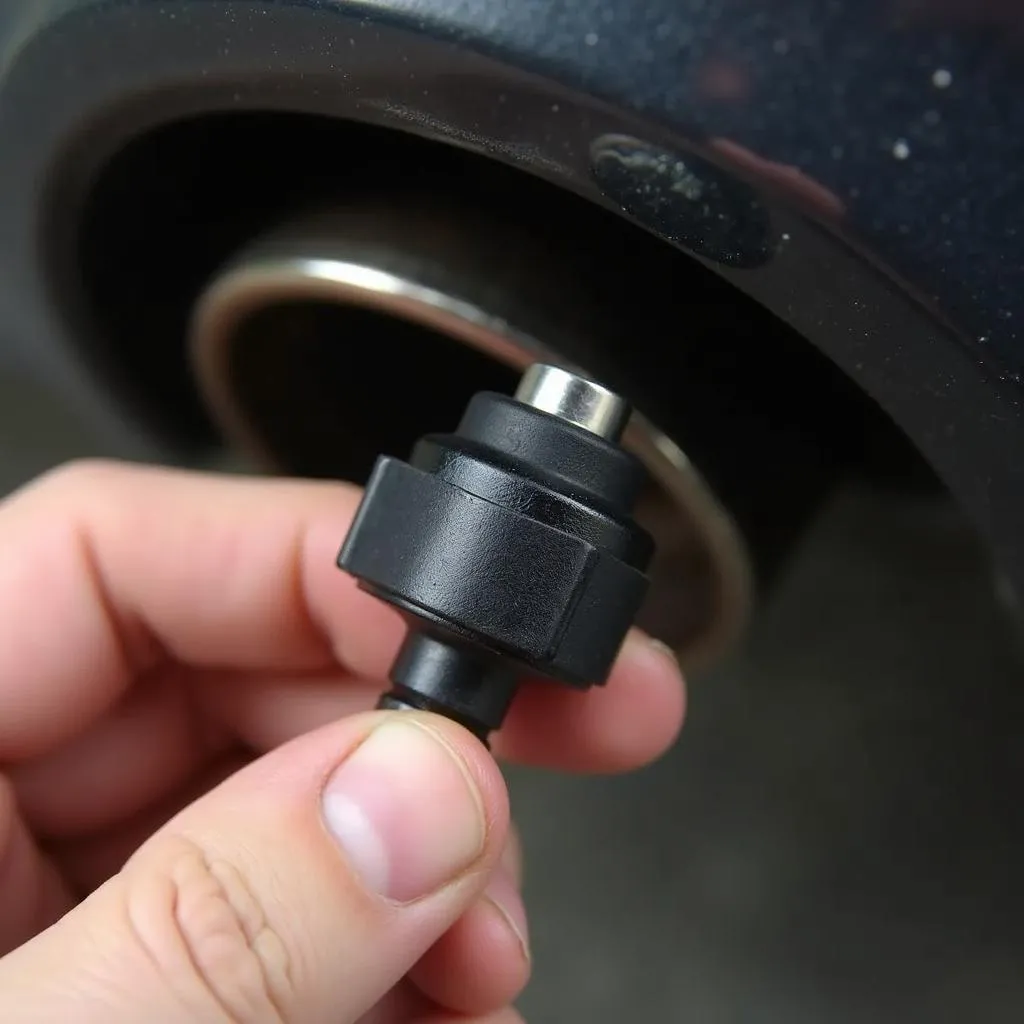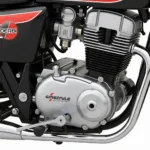The Diesel Particulate Filter (DPF) is an important component of modern diesel vehicles. It filters soot particles from exhaust gases, helping to ensure a cleaner environment. The particulate sensor, also known as the differential pressure sensor, plays a crucial role in monitoring the DPF. It measures the pressure difference before and after the filter, providing the engine control unit (ECU) with important information about the DPF’s load status. If the particulate sensor is faulty, it can lead to serious problems.
 Close-up of a faulty particulate sensor attached to a car's exhaust system
Close-up of a faulty particulate sensor attached to a car's exhaust system
What Are the Symptoms of a Faulty Particulate Sensor?
A faulty particulate sensor can manifest through various symptoms. These include:
- DPF warning light illuminating on the dashboard
- Loss of engine power, especially at higher RPMs
- Increased fuel consumption
- Fault codes stored in the engine control unit related to the particulate sensor
- Rough engine running or hesitation
- Black smoke from the exhaust
If you notice one or more of these symptoms in your vehicle, it’s important to visit a workshop as soon as possible.
Causes of a Faulty Particulate Sensor
There are various reasons why a particulate sensor can fail. The most common causes are:
- Contamination: Deposits of soot, ash, or other combustion residues can damage the sensor.
- Mechanical Damage: Shocks or vibrations can damage the sensor, for example, due to poor road conditions.
- Aging and Wear: Like any component, the particulate sensor is subject to natural wear.
- Faulty wiring or connectors can also lead to problems.
What to Do If the Particulate Sensor Is Faulty
If the particulate sensor is faulty, it usually needs to be replaced. In some cases, cleaning the sensor might be sufficient. However, this is only possible with minor contamination.
Repair costs for a faulty particulate sensor can vary depending on the vehicle model and workshop. It is advisable to obtain several quotes beforehand.
How to Avoid Particulate Sensor Problems
You can take some measures to extend the lifespan of your particulate sensor and avoid problems:
- Regular Maintenance: Have your DPF and the particulate sensor regularly inspected and cleaned at a specialist workshop.
- Avoid Short Trips: During short trips, the DPF may not regenerate sufficiently, which can lead to faster contamination of the sensor.
- Use High-Quality Diesel Fuel: High-quality fuel contains fewer soot particles, thus being gentler on the DPF and the sensor.
 Mechanic replacing a particulate sensor
Mechanic replacing a particulate sensor
Frequently Asked Questions About Faulty Particulate Sensors
Can you continue driving with a faulty particulate sensor?
It is not advisable to continue driving with a faulty particulate sensor. This can lead to consequential damage to the DPF and other components of the exhaust system.
How long does a particulate sensor last?
The lifespan of a particulate sensor depends on various factors, such as driving style and vehicle model. Typically, the lifespan is between 100,000 and 150,000 kilometers.
Can you replace the particulate sensor yourself?
Replacing a particulate sensor requires technical expertise and specialized tools. Therefore, it is recommended to have the replacement carried out at a specialist workshop.
How much does a new particulate sensor cost?
The cost of a new particulate sensor varies depending on the vehicle model and manufacturer. Typically, the cost is between 100 and 300 Euros.
Conclusion
A functioning particulate sensor is essential for the operation of the Diesel Particulate Filter and thus for compliance with emission standards. If you notice signs of a fault in the particulate sensor, you should consult a workshop immediately.
Do you need help diagnosing or repairing your vehicle? Our experts at AutoRepairAid are here to assist you. Contact us today!
